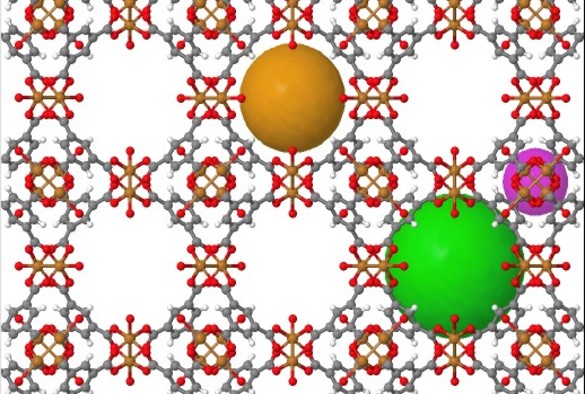More than 5.5 million users have accessed a free chemistry learning resource created by a University of Liverpool academic in collaboration with students.
The ChemTube3D site, which earned Professor Nick Greeves a Royal Society of Chemistry Nyholm Prize for Education in 2015, is an open educational resource that contains interactive 3D chemistry animations and structures, with supporting information, for students studying some of the most important topics in advanced school chemistry and university chemistry courses.
Nick Greeves said: “The popularity of ChemTube3D demonstrates the power of open educational resources, which are particularly important at present.”
Understanding the 3D structures of molecules is essential when exploring the interactions between atoms and chemical reactions. ChemTube3D recognises that traditional learning sources do not convey the complex interplay and movement of atoms well.
Nick said: “Students can consult ChemTube3D to better understand the topics they are studying especially when the 3D or animated aspect helps make things clear. It is fully searchable so it is easy to locate relevant content and is fully indexed by Google and other search engines so that a simple search will reveal the content.”
ChemTube3D has evolved to contain circa 2400 pages covering a vast array of chemistry topics, in particular organic reaction mechanisms, inorganic structures, the principles of structure and bonding and polymers. A dedicated section for A level students contains some of the most popular pages devoted to the structure of small molecules.
ChemTube3D is linked to three undergraduate textbooks from Oxford University Press so students can move seamlessly from the printed page (or now the online textbook page) to the relevant page on ChemTube3D.
Nick said: “Oxford University Press have provided the content for inorganic chemistry that was developed into interactive web pages by summer students working under my supervision. I have enjoyed collaboration with my colleagues in developing some of the sections particularly the Solid State inorganic structures which was funded by the outreach component of an EPSRC grant.
“The entirety of ChemTube3D was built in this way, by undergraduates for undergraduates. The most popular pages during the last four months have been those devoted to understanding molecular symmetry, shapes of small molecules such as water, methane, chlorine trifluoride (an exam favourite), and the conformation of cyclohexane all of which are difficult to understand and work particularly well in 3D.
“I am delighted that so many users across so many countries of the world have benefited from ChemTube3D and, as a result, gained a greater understanding of aspects of chemistry that are difficult to teach and learn with traditional methods.”
Visit the ChemTube3D site here.
